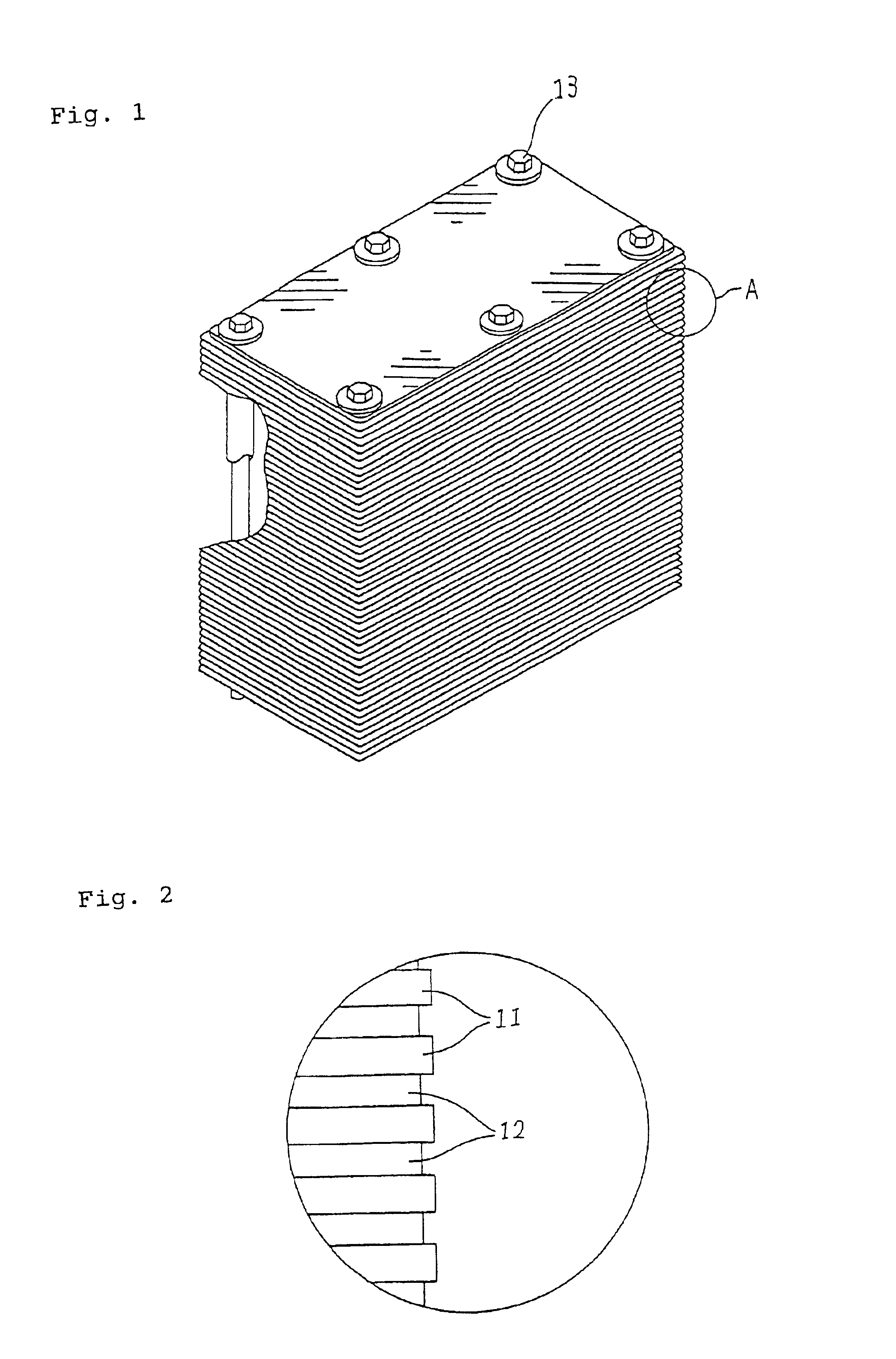Metal-collecting apparatus and method for elution and recovery of metal from metal-collecting material
a metal-collecting apparatus and metal-collecting material technology, applied in the direction of ion-exchange water/sewage treatment, dissolving, combustible gas purification/modification, etc., can solve the problems of low collection capacity or collection speed, insufficient durability, and no seawater valuable metal collection technique has been developed from the viewpoint of protecting the global environment, and the energy of the pumping power is the most of the energy of the recovered uranium
- Summary
- Abstract
- Description
- Claims
- Application Information
AI Technical Summary
Benefits of technology
Problems solved by technology
Method used
Image
Examples
example 1
Preparation of a Metal Collecting Material
A nonwoven fabric having an areal density of 60 g / m2 made of a polyethylene fiber of 10-20 μm in diameter was irradiated with γ-rays at 150 kGy in a nitrogen atmosphere and then immersed in a mixed monomer solution of acrylonitrile and methacrylic acid at 50° C. for 6 hours for graft polymerization. Then, the nonwoven fabric was immersed in dimethylformamide for washing at 50° C. for 3 hours and then weighed to give a grafting degree of 132%.
The grafted nonwoven fabric obtained above was immersed in a mixed solution of 50% methanol and 50% water containing 3% hydroxylamine hydrochloride and heated at 80° C. for 1 hour for amidoximation. Then, the nonwoven fabric was immersed in a 2% potassium hydroxide solution for alkaline treatment at 80° C. for 1 hour. This nonwoven fabric was thoroughly washed with pure water. The resulting metal collecting material had a thickness of 1.05 mm.
Construction of a Metal Collector
Layers of each of the metal c...
example 2
Preparation of a Metal Collecting Material
A nonwoven fabric having an areal density of 60 g / m2 made of a polyethylene fiber of 10-20 μm in diameter was irradiated with γ-rays at 150 kGy in a nitrogen atmosphere and then immersed in a mixed monomer solution of acrylonitrile and methacrylic acid at 50° C. for 6 hours for graft polymerization. Then, the nonwoven fabric was immersed in dimethylformamide for washing at 50° C. for 3 hours and then weighed to give a grafting degree of 132%.
The grafted nonwoven fabric obtained above was immersed in a mixed solution of 50% methanol and 50% water containing 3% hydroxylamine hydrochloride and heated at 80° C. for 1 hour for amidoximation. Then, the nonwoven fabric was immersed in a 2% aqueous potassium hydroxide solution for alkaline treatment at 80° C. for 1 hour. This nonwoven fabric was thoroughly washed with pure water and used as a metal collecting material.
Adsorption and Collection of Valuable Metals in Seawater
Ten test samples of 20 cm×...
PUM
| Property | Measurement | Unit |
|---|---|---|
| Fraction | aaaaa | aaaaa |
| Fraction | aaaaa | aaaaa |
| Force | aaaaa | aaaaa |
Abstract
Description
Claims
Application Information
 Login to View More
Login to View More - R&D
- Intellectual Property
- Life Sciences
- Materials
- Tech Scout
- Unparalleled Data Quality
- Higher Quality Content
- 60% Fewer Hallucinations
Browse by: Latest US Patents, China's latest patents, Technical Efficacy Thesaurus, Application Domain, Technology Topic, Popular Technical Reports.
© 2025 PatSnap. All rights reserved.Legal|Privacy policy|Modern Slavery Act Transparency Statement|Sitemap|About US| Contact US: help@patsnap.com



